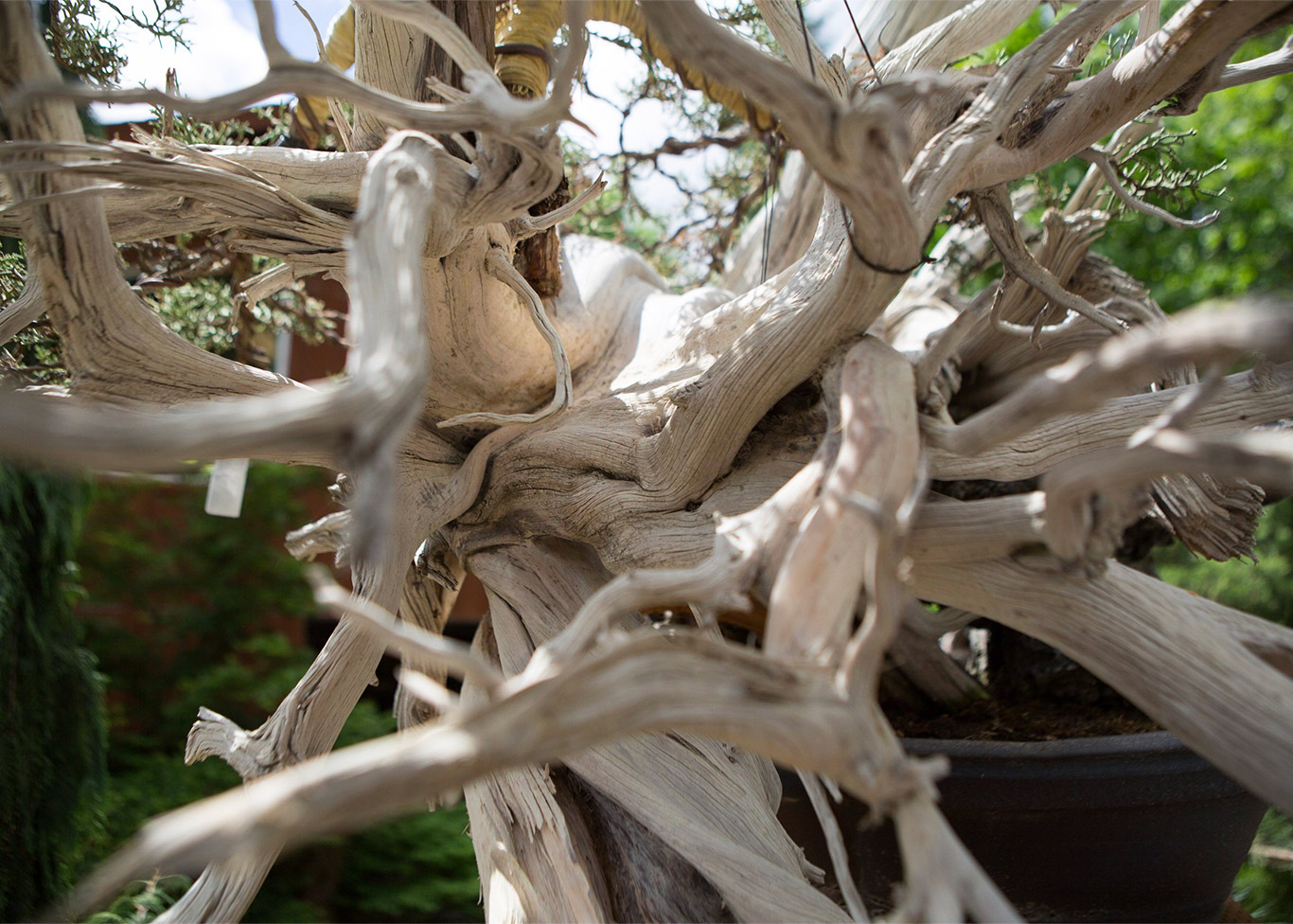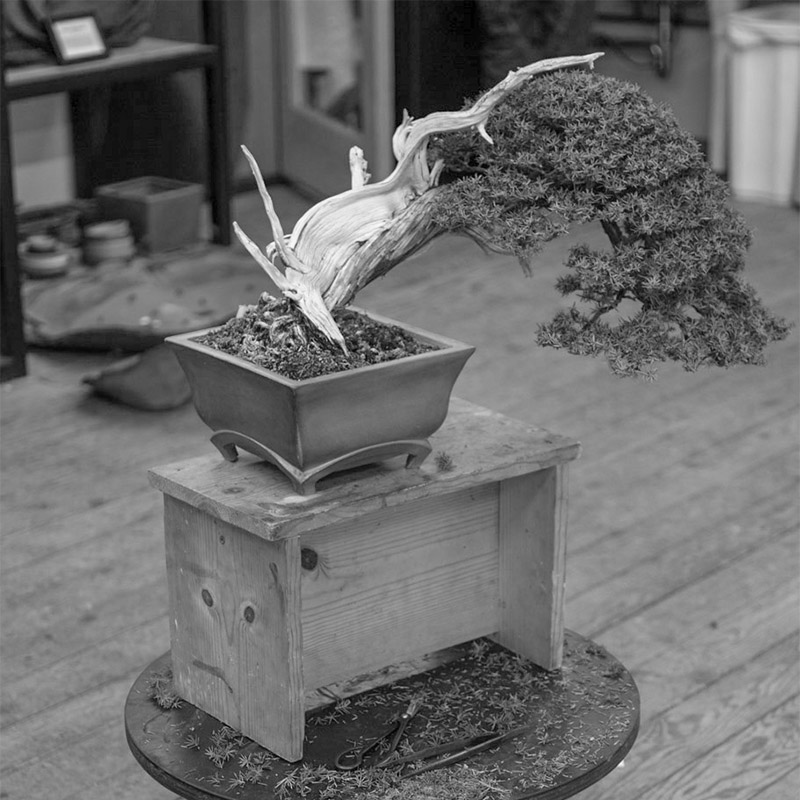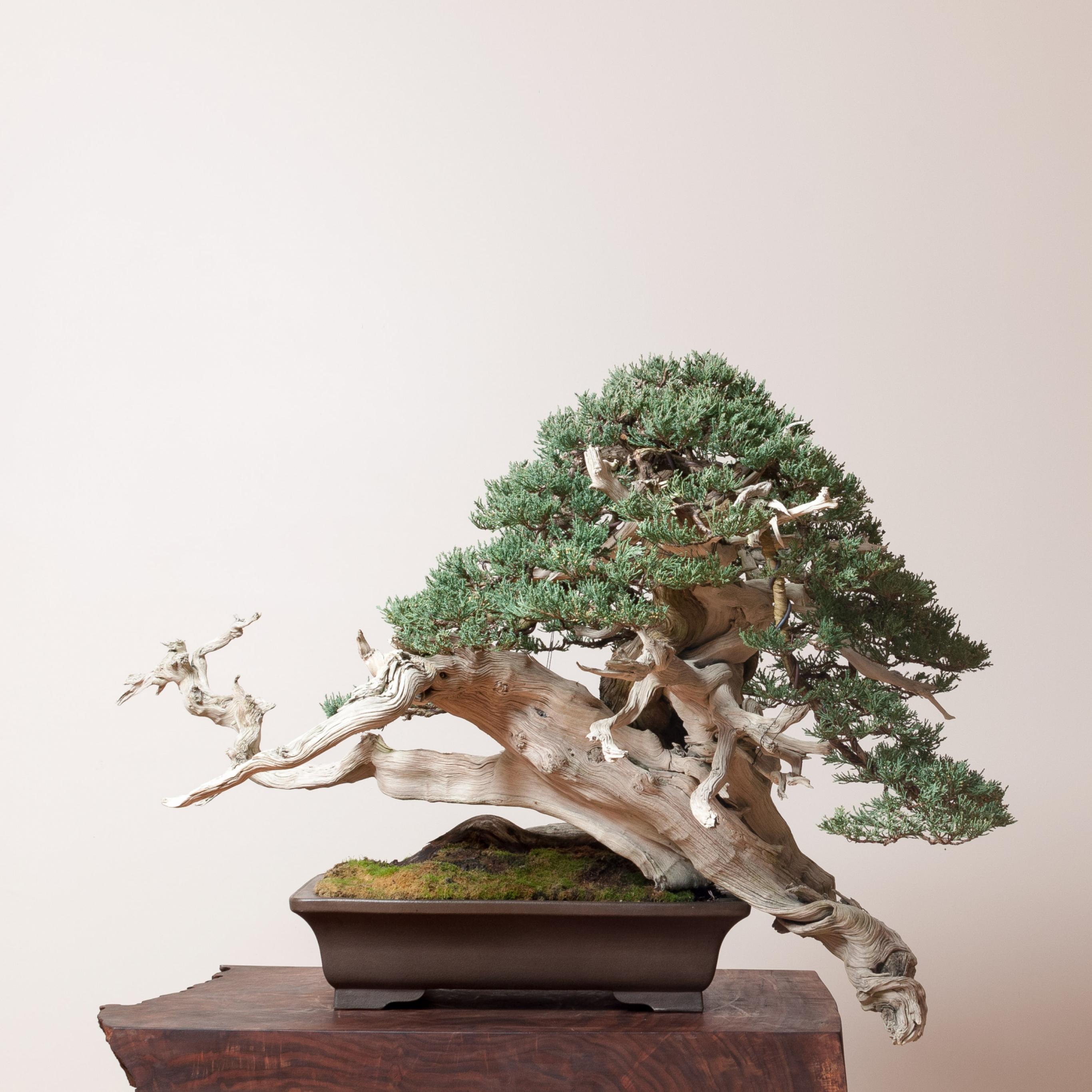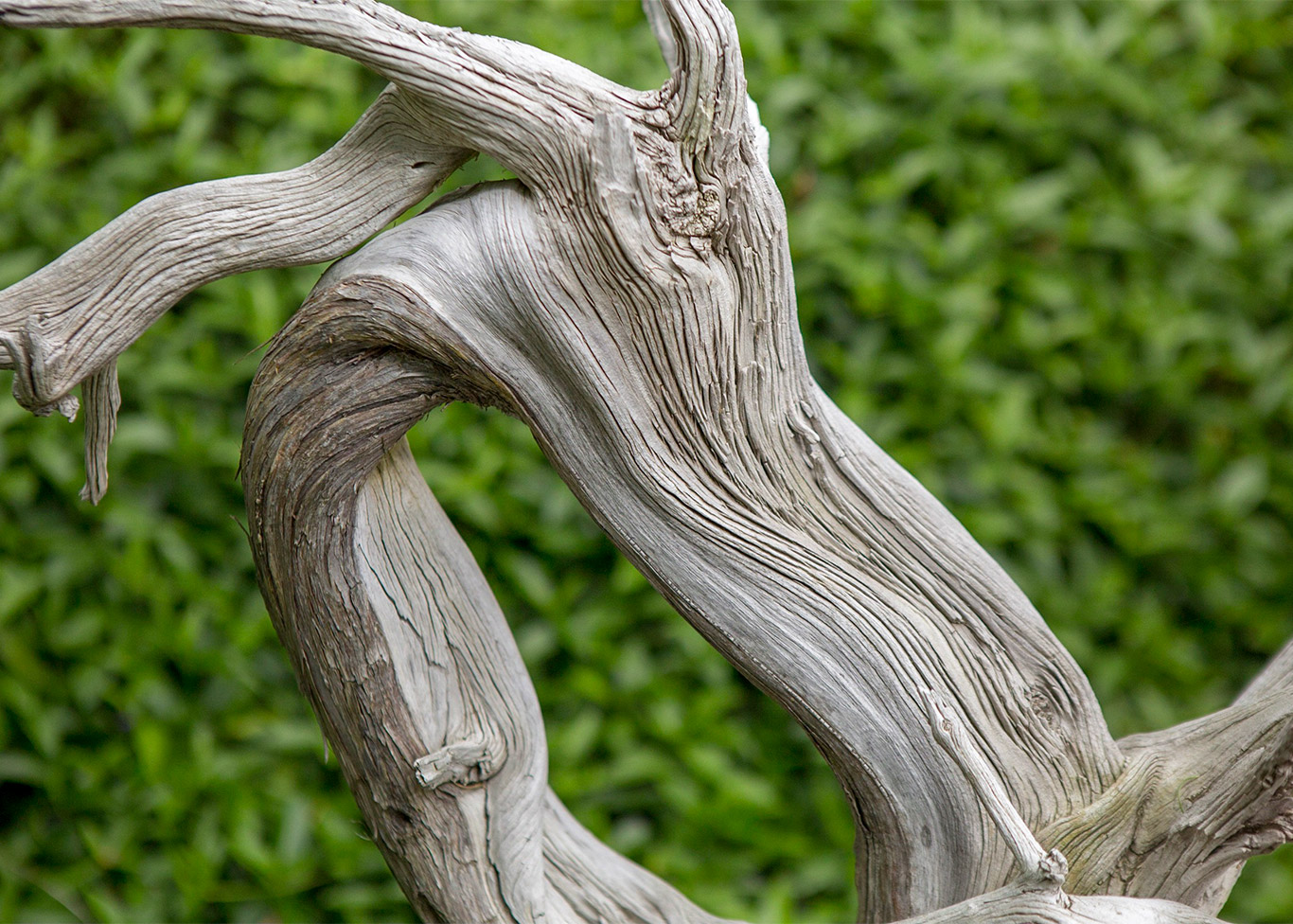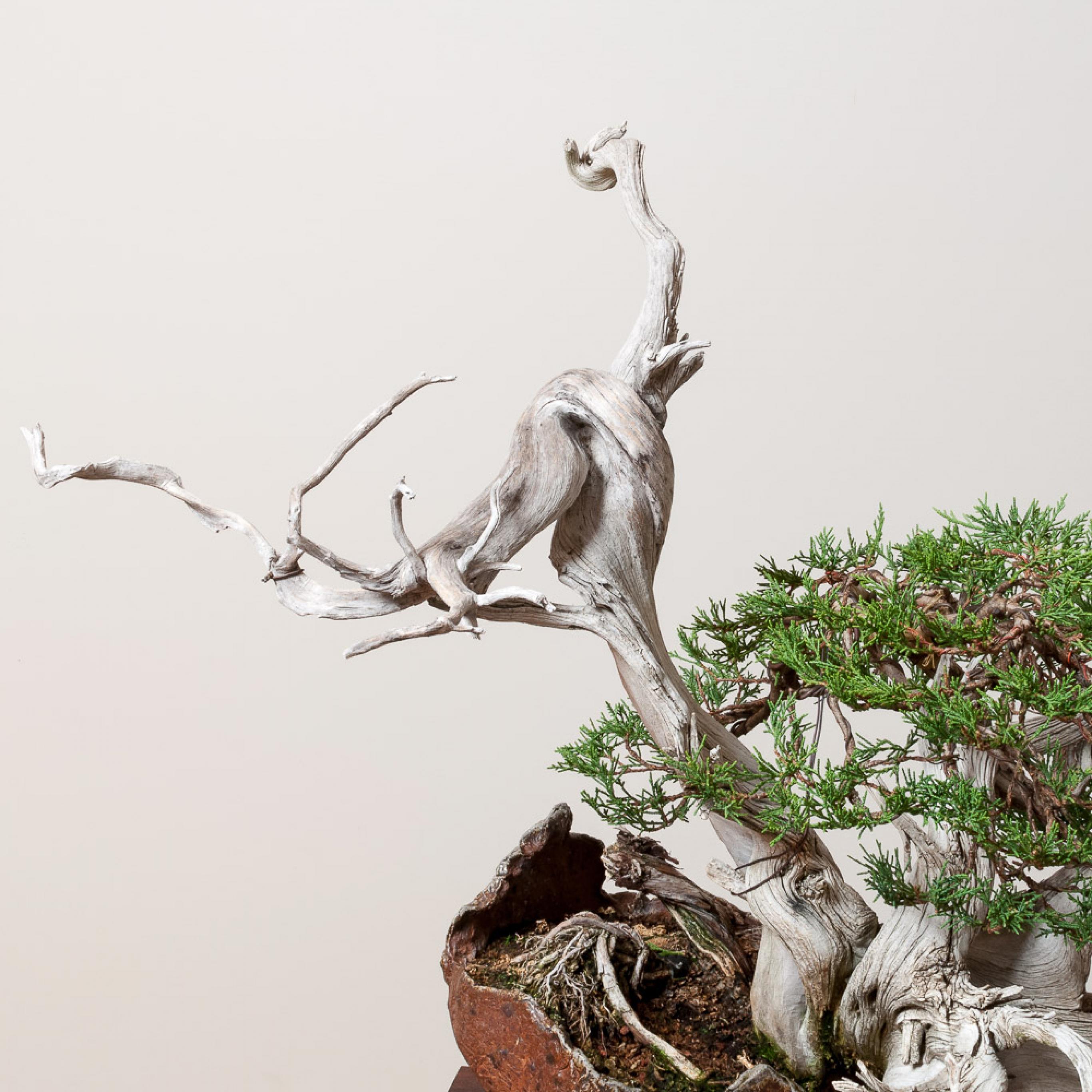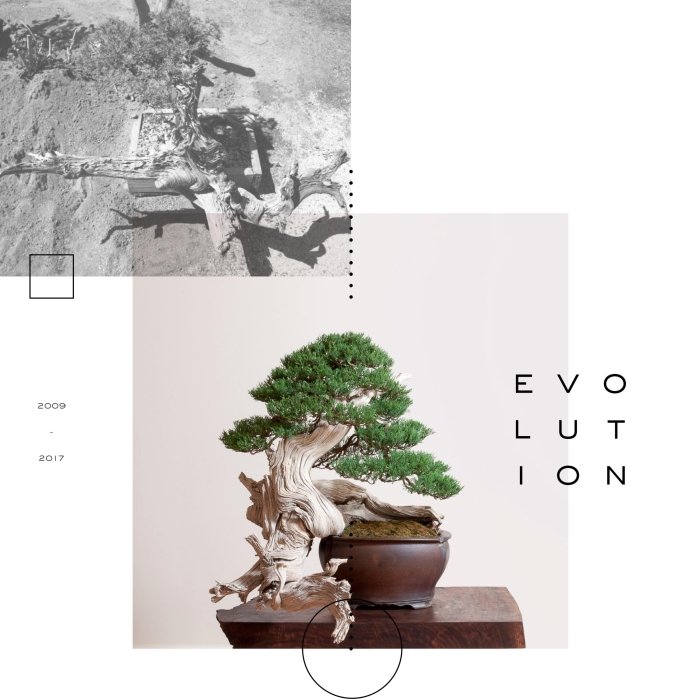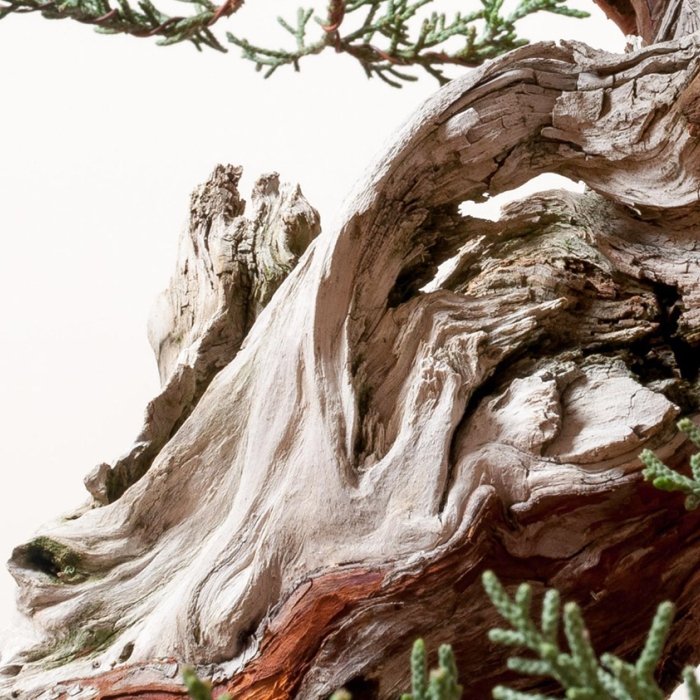A widespread and diverse conifer
If you’ve ever been to the Western Slope of Colorado, you know what I mean by prime juniper country— open skies, dry mountainsides, step-wise sedimentary outcroppings and vast rolling plains dotted with what seems like an infinite sea of starving junipers, some shrublike, some tall enough to call a tree.
The story of survival is striking in junipers, most seemingly teetering on that thin line of life and death. You can see the unrelenting wind, the crushing snow, the parched land in their growth – spindly, contorted, adapting to the unforgiving desert-like foothills, sprawling plateaus and semi-arid montane ecosystems. For many, the fragrance is most memorable; for some, it’s the allergies.

Juniperus is a plant genus with worldwide distribution, variety, and numerous cultural uses. Depending on the taxonomic view, the 50-67 species (1) of the Juniperus genus span almost the entire Northern Hemisphere, from the highest known tree lines of the Tibetan Himalaya – sitting at around 16,076ft – to the mountains and deserts of Central and North America, temperate Eurasia, tropical Africa, and even in the Arctic. One species of Juniper, J. communis, is the most widespread single conifer species in the world, with a circumpolar range from 70° N in Alaska, Scandinavia and Siberia to 28° N in the Himalaya. (2, 3)
The oldest junipers are known to live up to 2,675 years. The current oldest known elder is the Bennet Juniper - J. occidentalis sbsp. australis - at around 2,200 years growing in the Sierra Nevada, California.(4) The largest juniper in North America is the Jardine Juniper- J.scopulorum – located in Logan Canyon, Utah. Although barely alive, the Jardine has a 24 ft circumference, incredibly massive. There is talk of J. drupacea in Turkey growing up to 40m tall, but specific trees weren’t referenced. (2)
"The 50-67 species of the Juniperus genus span almost the entire Northern Hemisphere, from the highest known tree lines of the Tibetan Himalaya...to the mountains and deserts of Central and North America, temperate Eurasia, tropical Africa, and even in the Arctic."
Junipers vary in growth habit from tall trees to shrubs to sprawling ground-cover. All are evergreen, presenting with either scale or needle foliage-types. Although some species can be monecious, most junipers are dioecious, meaning the male and female reproductive facilities grow on separate plants. The male plants produce pollen cones, and the females produce fleshy ‘berries,’ which are actually seed cones posing as fruit to attract avian hosts mainly responsible for distribution. (1)
Cultural uses for juniper span back millennia, the oldest recorded use of juniper berries is found on Egyptian papyrus, dating back to 1500 BCE on a recipe for curing individuals with tapeworms. These berries were also in ancient Egyptian tombs, including the renowned child-king, Tutankhamun – although it is supposed that these berries were imported to Egypt from the Mediterranean. (5)
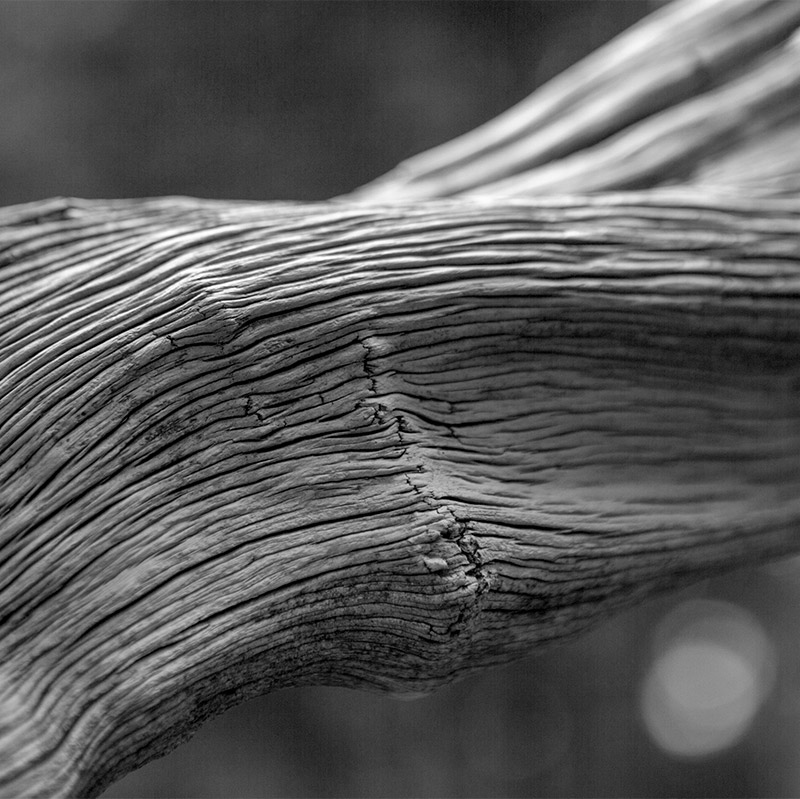
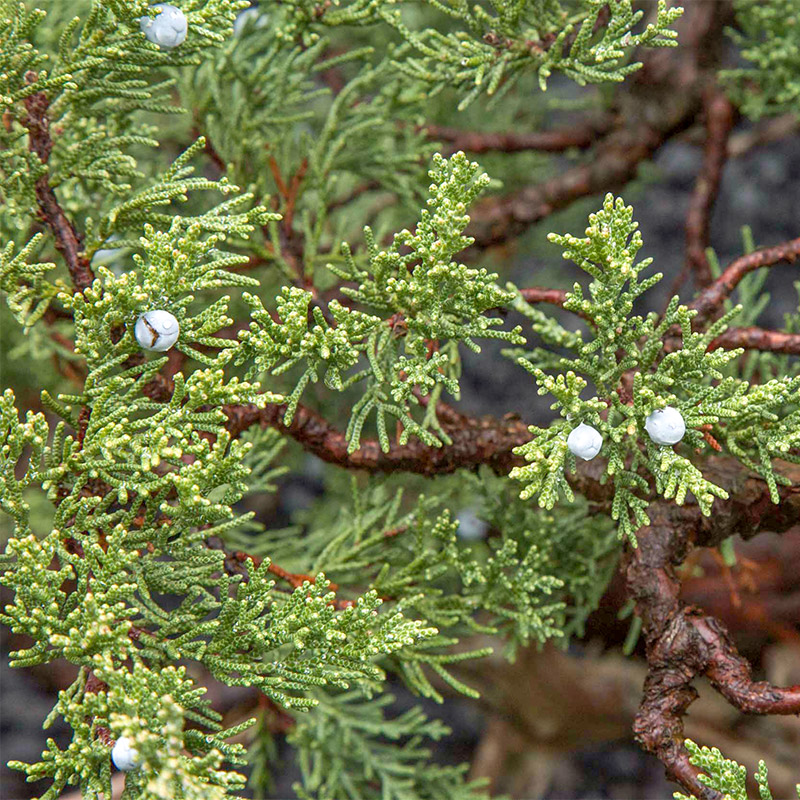
Ancient Romans, Greeks, and herbalists in Medieval times used juniper to cure stomach ailments, treat jaundice, ease kidney problems, aid digestion, and even induce miscarriage for unwanted pregnancies.
In fact, the colloquial term ‘Mother’s Ruin,’ generally refers to the liquor gin, (6) and hints at the danger of juniper berries, from which gin is made. In 17th century Scotland, the phrase ‘giving birth under the savin tree,’ was a euphemism for abortion, savin meaning sabina juniper. (7) Modern research does confirm that chemicals within juniper leaves and berries stimulate uterine wall contractions – it is still not recommended that pregnant women ingest juniper.
"Cultural uses for juniper span back millennia, the oldest recorded use of juniper berries is found on Egyptian papyrus, dating back to 1500 BCE."
This incredible plant is still used today in the treatment of diabetes, cancer, arthritis, gout, rheumatism, urinary tract & gastrointestinal infections, intestinal worms, kidney stones, bronchitis, flatulence, colic, snakebites, acne & psoriasis. (8)
In North America, indigenous tribes of the American Southwest used juniper tea to treat colds, headaches, joint pain, stomach problems & to ease childbirth. The fibrous bark was used for weaving, the wood for pueblo construction and for sacred ceremonial burning. (9, 1)
When burned, juniper gives off an incredible scent, it has been believed to ward off negative energy or evil spirits in legends the world over. From Buddhist temples, to ancient Gaelic celebrations, the smoke has been said to bless, purify, and aid clairvoyance. Throughout 14th century Europe, juniper was burned in the outbreak of the bubonic plague – healers supposed the smoke would cleanse the air of illness. (5)
Even today, cedar wood, which typically refers to a type of juniper - J. virginiana – is used for its aroma, resistance to pests, and cleansing properties. Cedar-wood armoires and dressers are known for warding off moths and keeping the content stored ‘fresh.’ While juniper wood is not particularly helpful for lumber, due to size and the uneven grain, the wood is very resistant to desiccation and pests – it is often use for landscape or fence-post construction. (2)
"Trees of the Juniperus genus are the most commonly used species for bonsai in the world."
Of course, one cannot mention the cultural uses of juniper without speaking to gin – an incredibly popular liquor throughout the world. As a drink that has been popular starting in Medieval times, gin’s flavor is derived from the distillation of common juniper berries. The name is based on the old English word genever, the French word genièvre, and the Dutch word jenever – all derived from the latin word for juniper, juniperus. (5)
Trees in the Juniperus genus are the most commonly used species for bonsai in the world. They are particularly attractive for bonsai due to the contorted growth habit, the stark differentiation between living and dead tissue, and the compact, bright foliage.
Bonsai junipers grab the attention of onlookers immediately, inciting questions as to how the tree remains living with such a weathered, twisted form. Admirers of the art naturally search for that slice of living tissue feeding a massive, perfectly tailored canopy. With their asymmetrical and wild aesthetic, junipers bear the story of an ancient struggle like no other tree.
They inhabit the chaotic form of nature – seemingly random and at will of the greater governing forces. The writhing branches and unruly foliage mass present limitless opportunities for the bonsai artist. So much so, there is a common saying in Japan that only geniuses can work with junipers, because they have to choose a direction for the composition while weighing seemingly infinite design possibilities. Many creatives can attest to the fact that having guiderails can facilitate creativity, so that one does not become swallowed by decision making. In bonsai design, junipers give you no such grace.
"With their asymmetrical and wild aesthetic, junipers bear the story of an ancient struggle like no other tree."
Junipers are readily available at nurseries throughout the world due to their common ornamental use in landscapes, providing numerous affordable options for bonsai material in what otherwise could have been a shrub lining someone’s garden. And while many junipers are durable—capable of surviving the many demands of bonsai work— as practitioners expand into more advanced techniques, they will find difficult idiosyncrasies in refining these trees.
Cultivating junipers as bonsai takes a pointed, unique approach. Horticultural knowledge from other coniferous plants or bonsai should not generally cross-pollinated. The strength in junipers lies in the foliage – it is the battery holding and generating energy for the tree to thrive.
A common mistake bonsai practitioners make is overly cutting back juniper foliage, assuming it will regain strength or pruning at a time when the tree is pumping all of its resources into foliage generation. Doing so will instigate a downward spiral of energy loss, resulting in a dead tree or one that needs years to recover. At Mirai, we never pinch junipers, instead relying solely on scissor work. Pinching causes the tree to lose energy that it has worked so hard to create without having the chance to rebuild strength.
Another important concept with junipers is maintaining a proper balance of water and oxygen. Some people assume that since junipers grow in arid conditions naturally, they prefer less water or drier soil – this is a misconception that can damage the health of the tree.
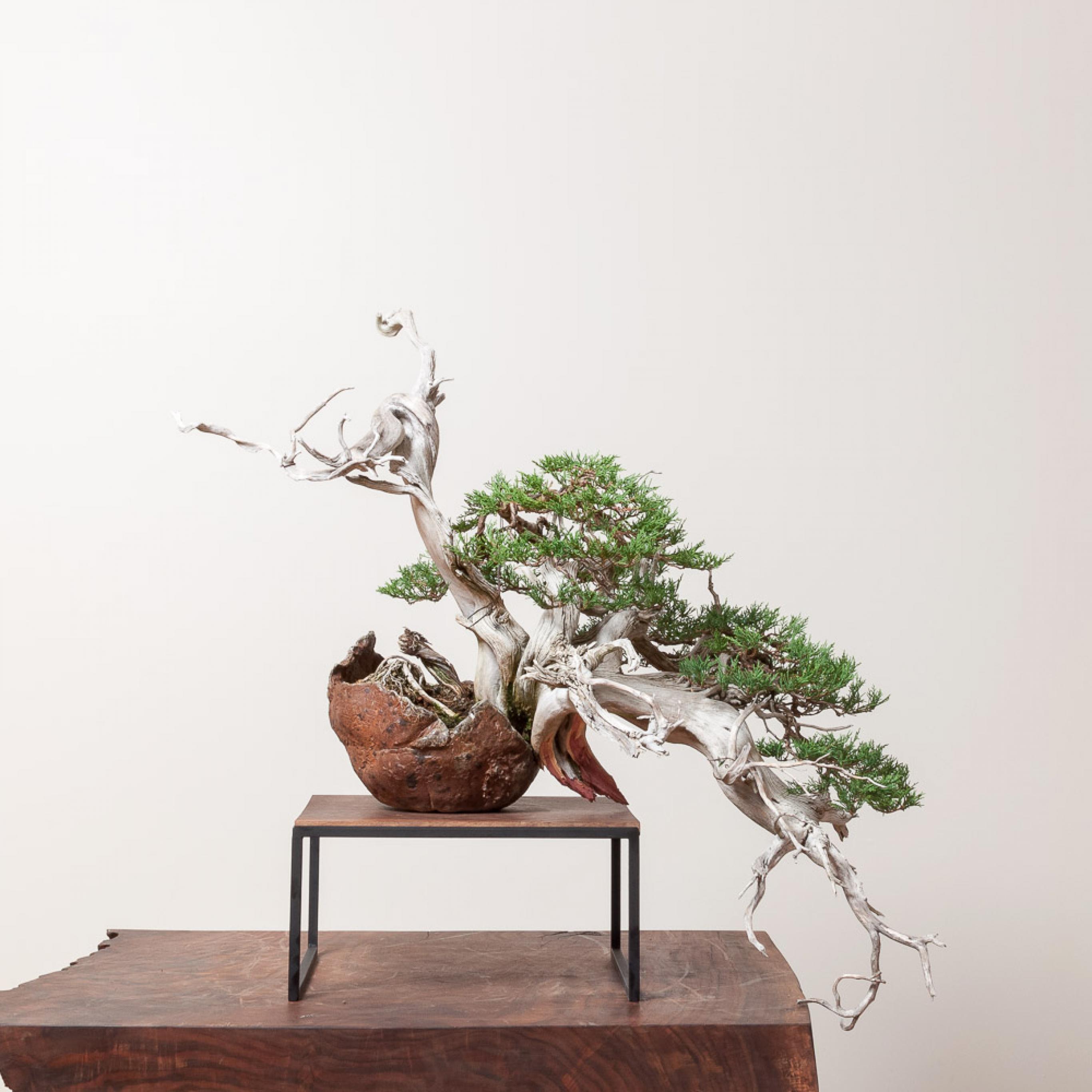
"They are the perfect amalgamation of forms and colors reflecting centuries of wind, sun, water, and weathering."
In the wild, junipers typically send taproots deep into the ground to source water in drought-like conditions, and their surface roots will be seasonally active depending on moisture-levels. When wild junipers are shifted into bonsai containers, these surface roots are all they have to hydrate and cool the foliar canopy. So these roots need and depend on a consistent water source to maintain a proper balance that allows the tree to recover from bonsai work and thrive in the containerized environment.
In almost every place that bonsai is practiced, you will find junipers. That said, there are numerous junipers species that have never been cultivated as bonsai, so the frontier for exploration is vast. Each species has its own subtleties in growth habit, handling of the roots and foliar mass, timing of work, and refinement tactics.

As these are some of the most widespread conifers the planet, the amount of variety in growing conditions, climate –the entirety of filling a niche is expressed in the juniper form. These ecological nuances should be carried through in the bonsai design; this requires an intimate knowledge of the species and the native environment. Junipers are a very specialized, prolific type of plant that has found a way to be represented as a cornerstone in many peoples’ mental picture of a wild landscape.
It could be argued that junipers are the best type of tree for the practice of bonsai. They are the perfect amalgamation of forms and colors reflecting centuries of wind, sun, water, and weathering – the quiet persistence of trees, these ancient beings that continue to persevere in a merciless ecosystem. These trees remind us of our place in the universe, simply as beings, creating and expelling energy in a random plot of soil or stone where a seed so happened to germinate and somehow, survive.


